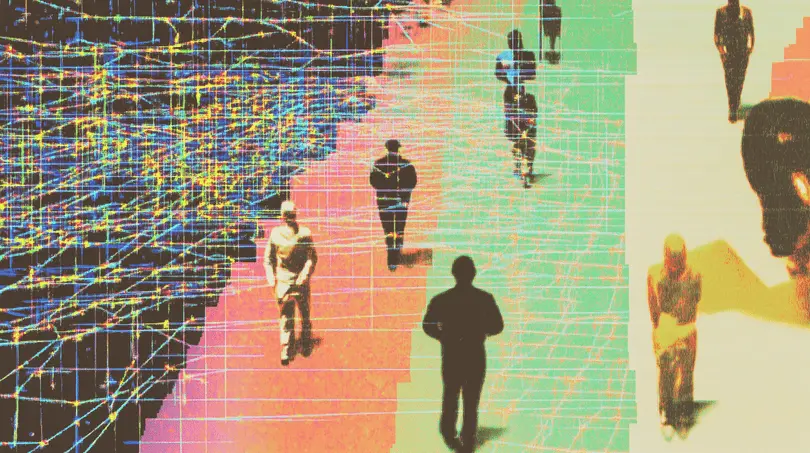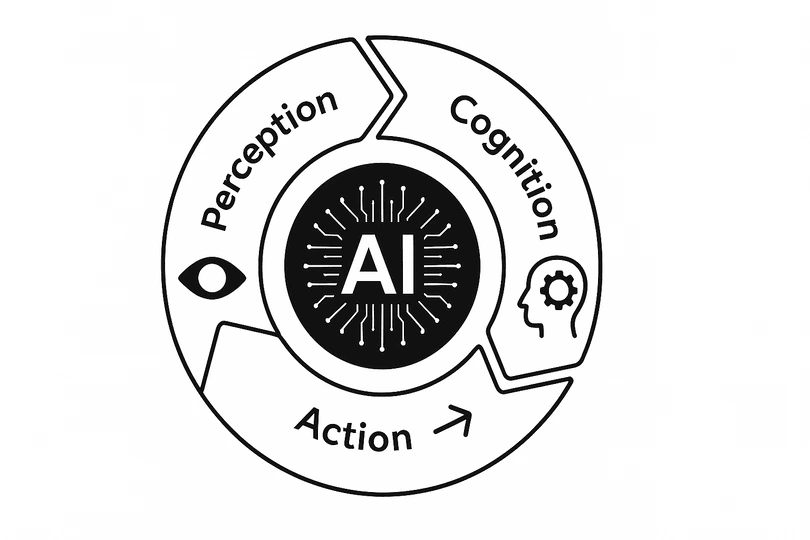What Are AI Agents? Intelligent Systems Shaping the Future

Rapid advancements in artificial intelligence technologies have ushered in a new approach that goes beyond traditional systems: AI agents. These autonomous software systems represent a form of AI that not only responds to commands but can also perceive its environment, make decisions, and act upon them.
In this article, we explore what AI agents are, how they work, what types exist, and how they are applied in real-world scenarios. We also examine the potential benefits and responsibilities that come with the rise of this technology.
What Is an AI Agent?
Traditional AI systems typically respond to external inputs—commands are issued, and the model responds. AI agents go beyond this by perceiving, processing, and acting based on environmental information.
An AI agent usually consists of three core components:
- Perception (Sensors): Collects data from the environment, which could be textual, visual, or numerical.
- Cognition (Decision-making): Analyzes the data and evaluates the situation.
- Action (Effectors): Executes decisions, creating change in digital or physical environments.
These systems operate in a continuous cycle: perceive → analyze → act.

Types and Characteristics of AI Agents
AI agents are categorized by their task definitions and cognitive capabilities:
1. Simple Reflex Agents
- Rule-based systems that operate on “if X, then Y” logic.
- Example: Responds only when a specific condition is met.
- Scenario: A system automatically replies when a certain word is detected.
2. Model-Based Agents
- Contain an internal representation of the environment.
- Can track changes over time.
- Scenario: Earthquake monitoring software adjusts alerts by comparing sensor input with previous seismic patterns.
3. Goal-Based Agents
- Designed to achieve specific objectives.
- Selects actions that most effectively or efficiently meet its goal.
- Scenario: A traffic system aiming to reduce average delays.
4. Utility-Based Agents
- Evaluates the value of each action and chooses the most "profitable" one.
- Scenario: A smart home system maximizes energy savings without compromising comfort.
5. Learning Agents
- Improves over time by learning from experiences.
- Scenario: A manufacturing line software refines its filters as it detects defective products.
Application Areas and Real-World Scenarios
AI agents are no longer theoretical—they’re increasingly being used in practical domains. Some examples include:
Business Process Automation
- Analyzes documents, classifies data, and triggers decisions.
- Scenario: A supply chain software automatically reorders stock when inventory is low.
Customer Service
- Not only responds to questions but also provides solutions and takes action.
- Scenario: An agent accesses three separate databases simultaneously while speaking to a customer.
Healthcare
- Offers continuous patient monitoring, medication reminders, and risk analysis.
- Scenario: Detects a drop in heart rate and alerts the nurse in advance.
Financial Systems
- Performs real-time risk analysis and detects fraud.
- Scenario: An agent locks the system and requests user verification during a suspicious transaction.
Software Development
- Generates code, analyzes bugs, and provides suggestions.
- Scenario: Offers alternative coding solutions to improve developer productivity.
The Transformative Role of AI Agents in Human Resources
One of the primary functional areas being transformed by AI agents is Human Resources (HR). Traditionally manual and time-consuming processes like recruitment, employee relations, and performance management are now becoming more efficient and predictable with the help of AI-driven agents.
Key Use Cases
- Smart Recruitment: Agents can analyze thousands of resumes to highlight the best-fit candidates and even schedule interviews or provide application guidance in real time.
- Employee Experience: Agents recommend personalized learning paths and act as virtual HR assistants, offering instant information on benefits and policies.
- Performance & Prediction: Analyze employee data to detect early warning signs, provide continuous feedback, and inform data-driven HR decisions.
- Administrative Automation: Routine tasks like document handling, leave management, and calendar coordination are automated, allowing HR professionals to focus on strategic work.
Ethical and Operational Challenges
- Data Privacy: Strong security protocols are essential for agents handling sensitive employee data.
- Algorithmic Bias: Models trained on biased data must be regularly audited and calibrated to prevent discriminatory outcomes.
- Human-Machine Balance: Agents should support—not replace—HR professionals.
- Change Management: Successful adoption requires strategic leadership that addresses resistance and involves users in the transformation process.
In conclusion, the use of AI agents in HR should not aim to eliminate the human touch but rather to combine technological efficiency with empathetic engagement. This will lay the foundation for a more fair, data-driven, and inclusive future in human resources.
New Developments and Future Trends
- Multi-Agent Systems: Multiple agents collaborating based on their areas of expertise, promoting team-based problem solving. To enable these multi-agent systems to collaborate more efficiently and at scale, the Model Context Protocol (MCP) provides a next-generation standard that allows AI agents to seamlessly interact with external data sources and tools.
- Advanced Reasoning: Agents developing abstract thinking and making decisions under uncertainty.
- Embodied Agents: Equipped with physical sensors or robotic components, engaging with the physical world as well.
- Personalization & Adaptation: Agents learning user behavior to deliver highly tailored services.
Challenges and Responsibilities
- Reliability & Misinformation: Inaccurate outputs from agents can pose significant risks in critical applications.
- Security & Control: As agents gain autonomy, oversight and intervention mechanisms must be thoughtfully designed.
- Ethics & Transparency: It's essential to define how agents operate and with what data. Privacy, consent, and boundaries must be clearly addressed.
- Accountability: When an agent makes a mistake, who is responsible—the developer, the user, or the organization? These questions still lack clear answers.
Conclusion: At the Threshold of a New Era of Collaboration
AI agents mark a new chapter in the evolution of artificial intelligence. These systems are not just tools—they are becoming collaborators. For this transformation to succeed, technological progress must be accompanied by human oversight, ethical frameworks, and transparency.
The most successful implementations will be not only intelligent but also responsible. The coming years will witness developments that redefine the nature of human-machine collaboration.
Resources:- Brian O’Neill, “What is an AI agent? A computer scientist explains the next wave of artificial intelligence tools.” The Conversation, Dec 18, 2024 gigazine.net.
- Molly Hayes & Amanda Downie, “AI agents in human resources.” IBM Blog, Mar 28, 2025 ibm.com.
- Cole Stryker, “Types of AI agents.” IBM Blog, Mar 17, 2025 ibm.com.
- Sahin Ahmed, “AI Agents in 2025: A Comprehensive Review and Future Outlook.” Medium, Jan 11, 2025 medium.com.
- MIT News Office, “New AI model could streamline operations in a robotic warehouse.” MIT News, Feb 27, 2024 news.mit.edu.
- MIT News Office, “MIT engineers help multirobot systems stay in the safety zone.” MIT News, Jan 31, 2025 news.mit.edu.
Notification!




